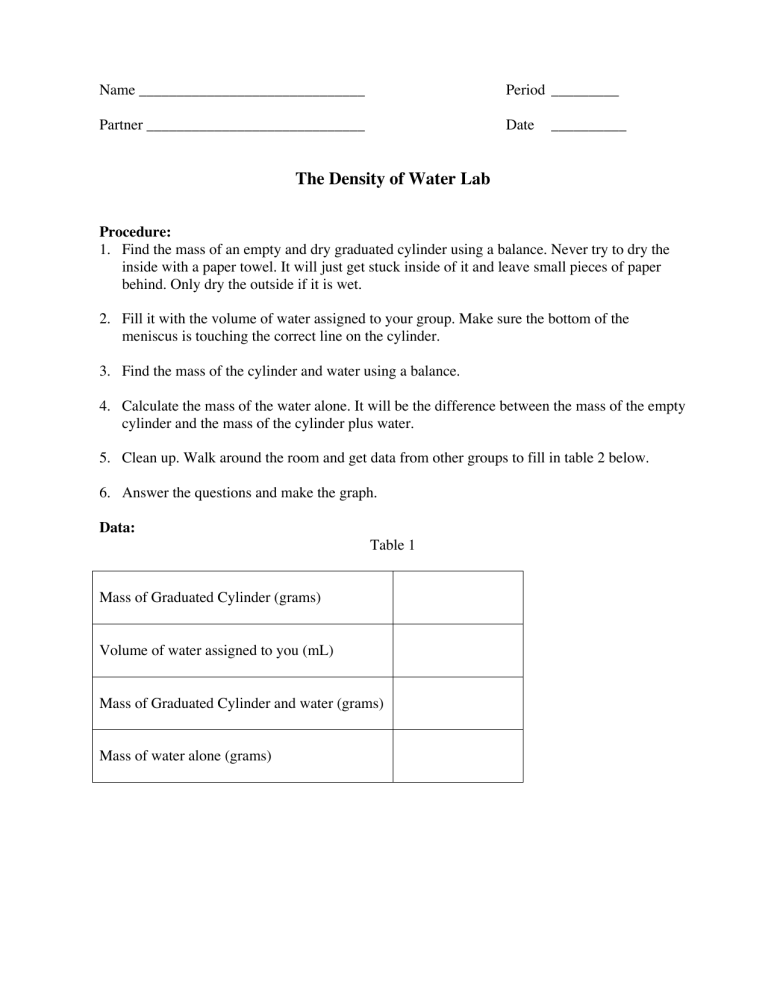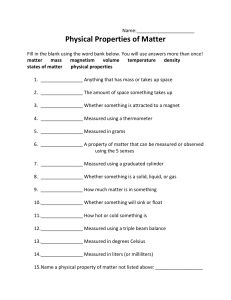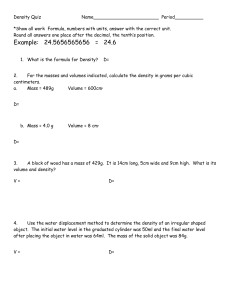
Name ______________________________ Period _________ Partner _____________________________ Date __________ The Density of Water Lab Procedure: 1. Find the mass of an empty and dry graduated cylinder using a balance. Never try to dry the inside with a paper towel. It will just get stuck inside of it and leave small pieces of paper behind. Only dry the outside if it is wet. 2. Fill it with the volume of water assigned to your group. Make sure the bottom of the meniscus is touching the correct line on the cylinder. 3. Find the mass of the cylinder and water using a balance. 4. Calculate the mass of the water alone. It will be the difference between the mass of the empty cylinder and the mass of the cylinder plus water. 5. Clean up. Walk around the room and get data from other groups to fill in table 2 below. 6. Answer the questions and make the graph. Data: Table 1 Mass of Graduated Cylinder (grams) Volume of water assigned to you (mL) Mass of Graduated Cylinder and water (grams) Mass of water alone (grams) Table 2 Student’s First Name Mass of water (In grams) Volume of Water (In milliliters) Density of Water (mass divided by volume) 10 mL 20 mL 30 mL 40 mL 50 mL 60 mL 70 mL 80 mL 90 mL 100 mL Post Lab Questions: 1. Construct a graph of mass (y axis) versus volume (x axis) for the data in table 2. Label the axes(mass and volume not x and y), title the graph, include units, and draw the line as smoothly as possible. Use a computer to generate the graph. It should fill the entire page. Staple it to this page. 2. What is the accepted value for the density of water at room temperature? 3. What physical quantity does the slope of the line on your graph represent? 4. What are the units for the slope of your line? 5. Select one possible source of error and tell how it would change your data. Would your value for the density be higher or lower? Explain with a sample calculation




